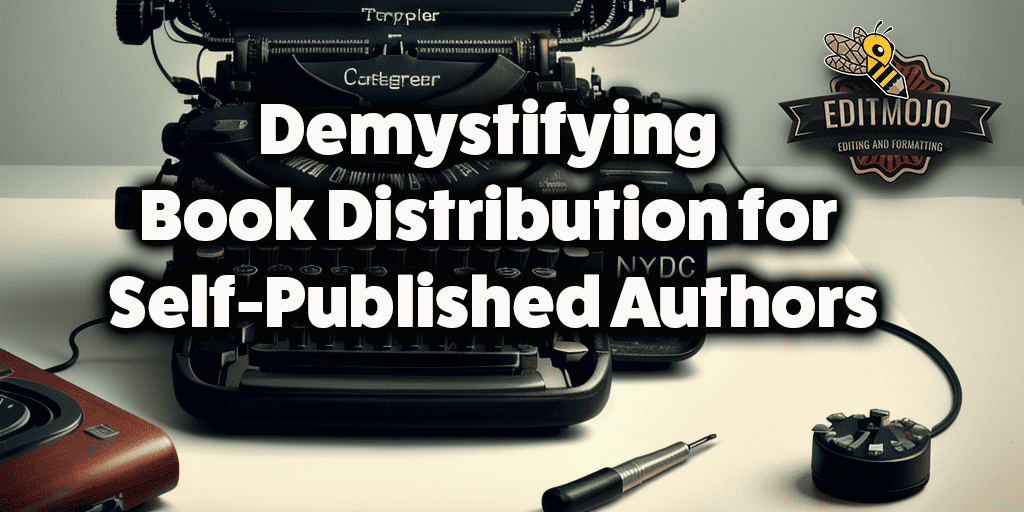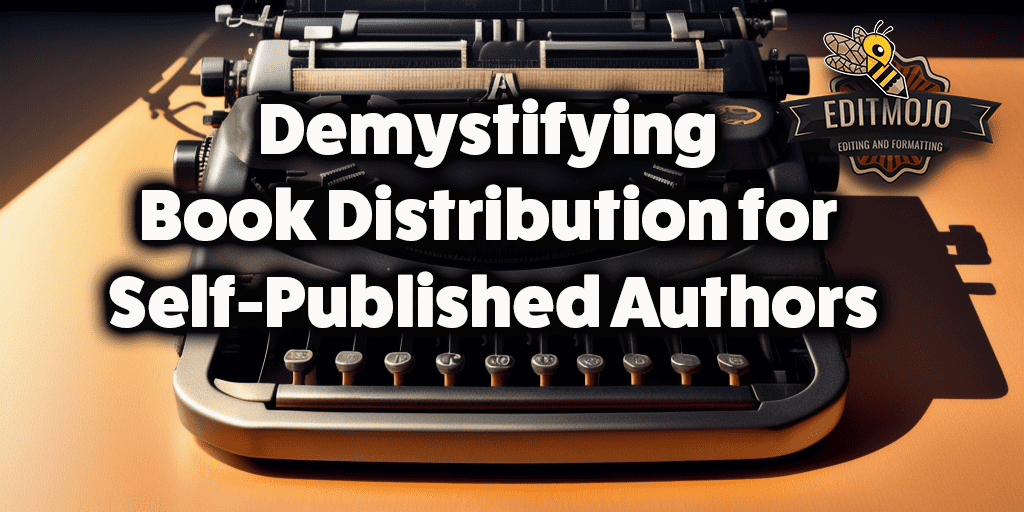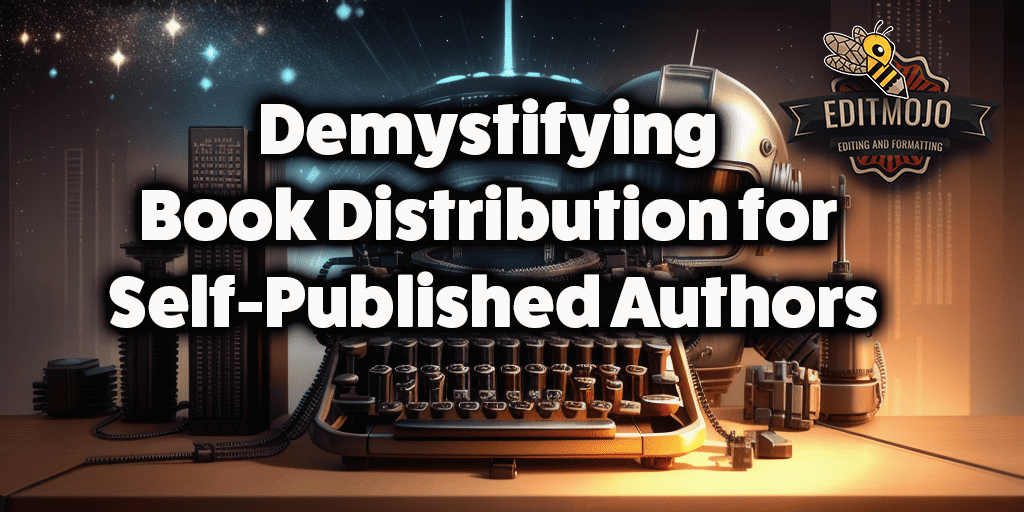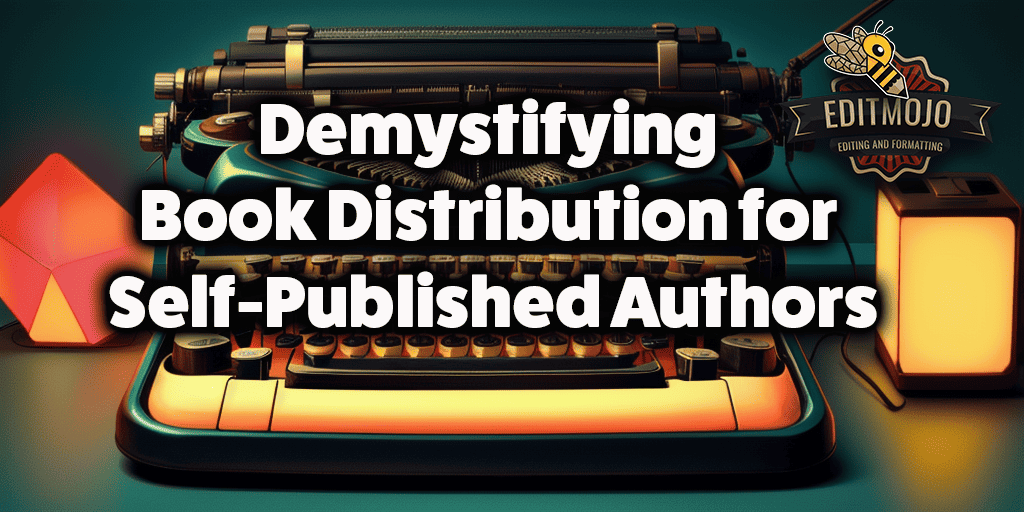Demystifying Book Distribution for Self-Published Authors
Demystifying Book Distribution for Self-Published Authors. In the exciting, boundary-pushing world of self-publishing, distribution is a concept that often leaves authors scratching their heads. With so many avenues, rules, and unknowns, it’s no wonder that it can feel like venturing into a labyrinth. Fear not, brave writers! Today, we’re Demystifying Book Distribution for Self-Published Authors.
Key takeaways from each chapter:
| Chapter | Key Takeaways |
|---|---|
| Defining Distribution | Book distribution involves getting your books into the hands or onto the screens of readers. The shift towards online retailers is notable. |
| Print vs. eBook Distribution | Print involves physical logistics while eBook is about digital delivery. Both have their specific platforms for distribution. |
| The Magic of Distributors and Aggregators | Distributors and aggregators help get your book to multiple retailers and libraries. They differ in their relationships with these outlets. |
| Key Considerations for Successful Distribution | Success involves strategic decisions about pricing, exclusivity, and understanding the right channels. |
| Foreign Rights and International Distribution | Breaking into international markets can be a great opportunity. Selling foreign rights can help reach global readers. |
| Libraries and Schools—The Overlooked Channels | Libraries and schools provide significant exposure and potential revenue. Certain platforms specialize in these channels. |
| Understanding Royalties in Book Distribution | Royalties are your earnings from book sales. The amount can vary depending on the retailer, distributor, or aggregator you’re using. |
Chapter One: Defining Distribution
Before we dive into the deep end, let’s start with the basics: what exactly is book distribution? In the simplest terms, book distribution is the process of getting your books into the hands—or onto the screens—of readers.
Traditionally, this process was dominated by brick-and-mortar bookstores and libraries. Today, however, the story is much different, with a significant shift toward online retailers, such as Amazon, Barnes & Noble, and Kobo.

Chapter Two: Print vs. eBook Distribution
Distribution varies greatly depending on whether you’re selling physical books or eBooks.
Print distribution involves physical logistics—printing, storing, shipping, and managing returns. To reach a broad audience, self-published authors often rely on print-on-demand services, like Amazon’s KDP or IngramSpark. These platforms allow books to be printed as customers order them, eliminating the need for upfront printing costs and storage.
eBook distribution, on the other hand, is all about digital delivery. Your book is a file that can be instantly downloaded or streamed. Major eBook retailers include the aforementioned Amazon, Barnes & Noble, and Kobo, but there are numerous others, such as Apple’s iBooks and Google Play Books.
Chapter Three: The Magic of Distributors and Aggregators
The beauty of today’s digital age is that you don’t have to knock on each retailer’s door to get your book on their shelves. This is where distributors and aggregators come in. These platforms, like Draft2Digital, Smashwords, and IngramSpark, distribute your book to multiple retailers, libraries, and even schools.
The key difference between the two lies in their relationships with retailers: distributors usually have a direct relationship, while aggregators distribute through various channels without a direct relationship.
Chapter Four: Key Considerations for Successful Distribution
Successful distribution is more than just getting your book listed on retailers. It involves strategic decision-making regarding pricing, exclusivity, and understanding the right channels for your book.
For instance, some authors opt for Amazon’s KDP Select program, which requires 90-day exclusivity but offers promotional opportunities and inclusion in Kindle Unlimited. Others prefer a non-exclusive approach, distributing their books across multiple platforms to reach as many readers as possible.

Epilogue: Embracing the Adventure
Like any journey, the road to successful book distribution is fraught with choices. It’s essential to take the time to understand your options, consider your goals, and align your strategy accordingly. Remember, every author’s journey is unique—embrace yours!
So, there you have it. We’ve started to demystify the complex world of book distribution for self-published authors. It’s a topic that’s deep and wide, but fear not—you are now better equipped
Chapter Five: Foreign Rights and International Distribution
Breaking into international markets can be a boon for self-published authors. While English-speaking countries such as the U.S., U.K., Canada, and Australia are traditionally the biggest markets, there’s an increasing demand for English-language books in non-English speaking countries.
Foreign rights are the rights to publish and distribute a book outside of your home country. By selling these rights, you can reach readers around the globe. Companies like 2 Seas Agency specialize in selling foreign rights for self-published authors.
Additionally, many eBook distributors and aggregators have extensive international distribution networks, making it easier than ever to reach global readers.
Chapter Six: Libraries and Schools—The Overlooked Channels
Libraries and schools represent another important channel for book distribution. While they may not be the first venues that come to mind when self-publishing, they can provide significant exposure and revenue.
Platforms like OverDrive, which provides access to the largest network of libraries and schools worldwide, and Biblioboard, which supports local self-published authors, are important resources.
Chapter Seven: Understanding Royalties in Book Distribution
Let’s talk money. Understanding how royalties work in book distribution is crucial for self-published authors.
Royalties are your earnings from book sales, and the amount you receive can vary widely depending on the retailer, distributor, or aggregator you’re using. For instance, Amazon’s KDP offers a 70% royalty rate on eBooks priced between $2.99 and $9.99 in certain territories, and a 35% royalty rate on books priced outside this range or in certain other territories.
Print book royalties can often be lower due to the cost of printing, and using a distributor or aggregator can also affect your earnings, as they take a cut for their services. It’s essential to read the fine print and understand the financial implications before you choose a distribution path.

Epilogue: Your Distribution, Your Destiny
Distributing your self-published book doesn’t have to be a mysterious or daunting process. With the right knowledge and tools at your disposal, you can take control of your book’s destiny and achieve your publishing dreams.
Remember, the world of book distribution is constantly evolving, and so are the opportunities for indie authors. Stay informed, be flexible, and keep writing. The world is waiting for your words.
We hope this post has been helpful in demystifying book distribution for self-published authors. If you have any questions or topics you’d like to see covered in future posts, please let us know in the comments below. Happy publishing!
